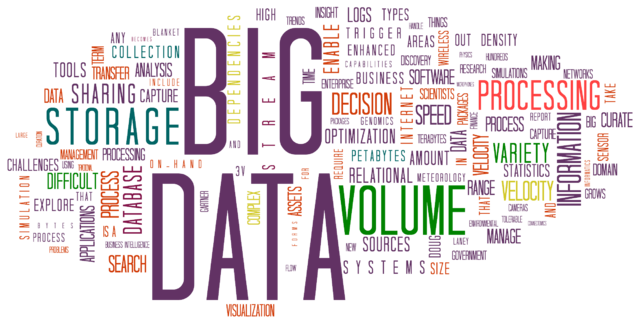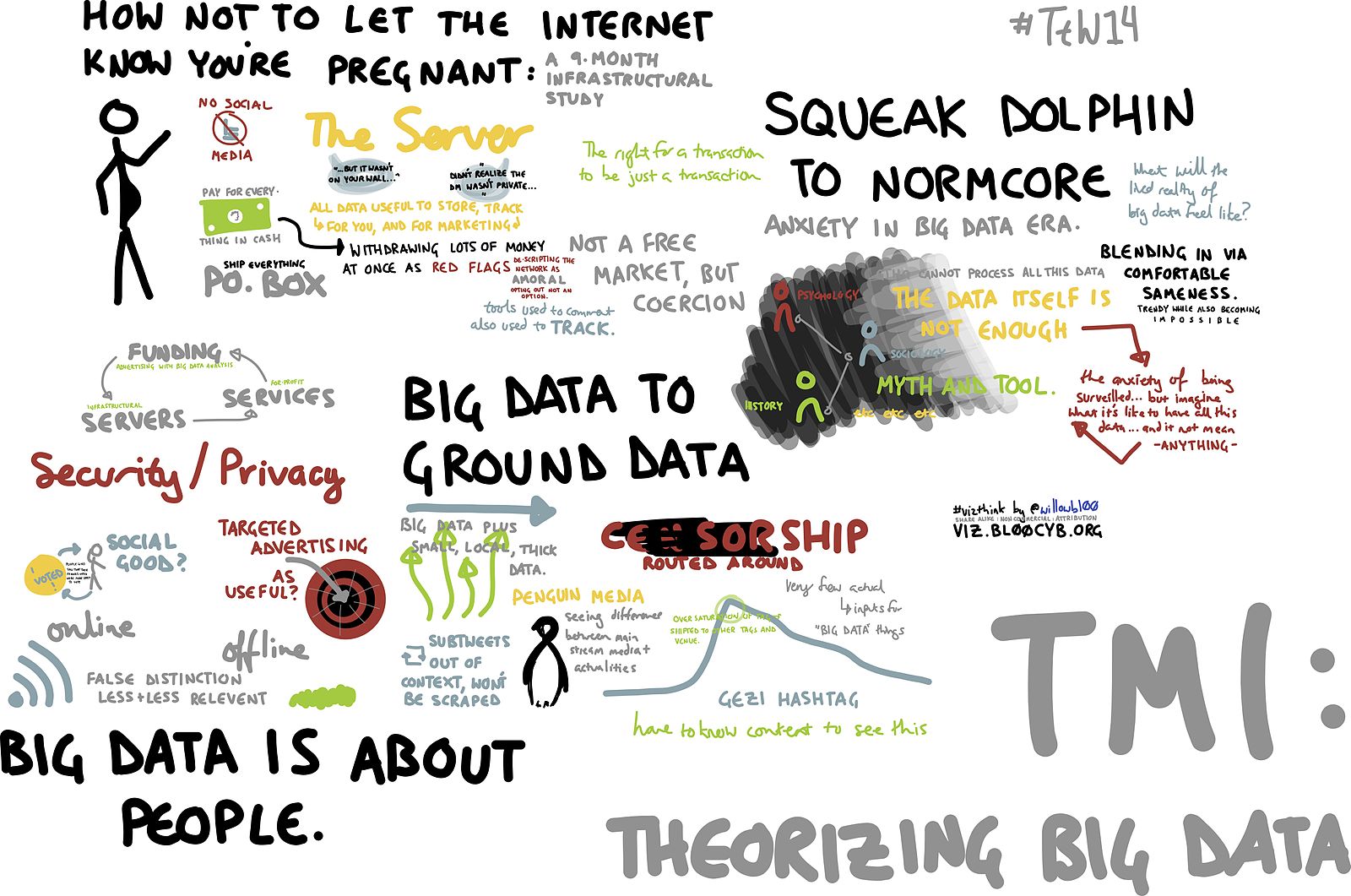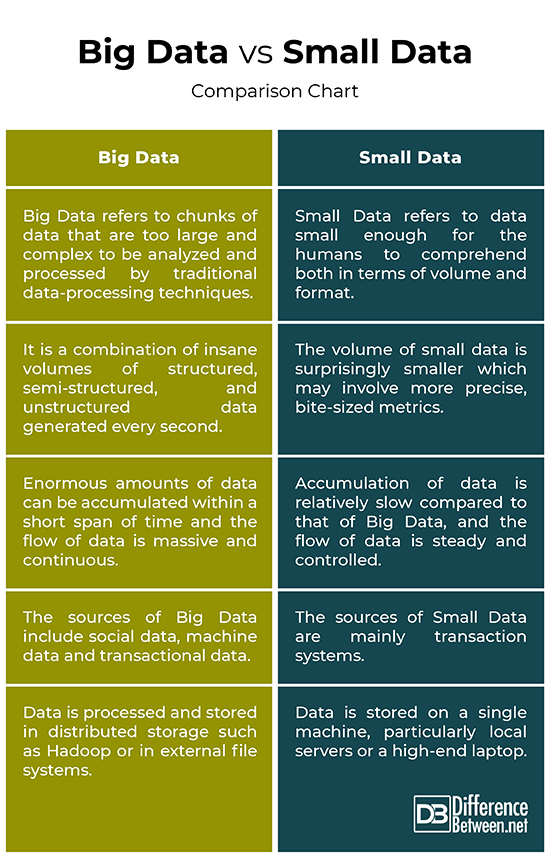Difference Between Big Data and Small Data
The term ‘Small Data’ contrasts with ‘Big Data’, which refers to a combination of insane volumes of structured, semi-structured, and unstructured data generated every second. Big Data can also b defined using the three Vs of data: Volume, Velocity and Variety. Volume refers to the amount of data generated every second; velocity means the rate at which data is received and processed; and variety refers to the different formats of data.

What is Big Data?
Big Data refers to extremely large chunks of both structured and unstructured data that are too complex for human comprehension. Data used to mean documents and papers, with maybe a few photos or videos, but now it means much more than that. It’s nearly impossible to estimate the amount of data we produce every day. It is believed that almost 2.5 quintillion bytes of data created each day, thanks to increasing number of digital devices and growth of Internet of Things. Moreover, social networking sites generate large amounts of data in the form of images, videos and graphics on a minute by minute basis. Big Data refers to the large volumes of data produced in the digital age, which include all the Web data generated by emails, websites, streaming platforms, and social networking sites. Big Data not only refers to the amount of data generated and stored electronically, but also the large data sets that are too complex to be processed using conventional data processing methods and which would require new algorithmic techniques.

What is a Small Data?
Small data refers to data small enough for the humans to comprehend both in terms of volume and format. Data volume means the amount of data to be processed. And when it comes to small data, the volume is surprisingly smaller which may involve more precise, bite-sized metrics. The term small data contrasts with Big Data, which, on the other hand, refers to data too large and complex to be analyzed and processed by traditional data-processing techniques. Small data can be defined as small sets of data that are capable enough to impact decisions in the present. Unlike Big Data, the rate at which small data arrives for processing is steady and controlled, and accumulation of data is relatively slow as well, which makes them easy to process and easily accessible. And the best part, small data is everywhere and it’s easy for humans to comprehend, which in fact, can translate to business intelligence.
Difference between Big Data and Small Data
Meaning
– Big Data refers to large chunks of data that are too voluminous and complex to be analyzed and processed by traditional data-processing techniques. Big Data is the large volumes of data produced in the digital age, which include all the Web data generated by emails, websites, streaming platforms, and social networking sites. Small data, on the contrary, refers to data small enough for the humans to comprehend both in terms of volume and format.
Volume
– Big Data is a combination of insane volumes of structured, semi-structured, and unstructured data generated every second and that inundates a business on every-day basis. Web applications like social networks, real-time analytics, streaming platforms, or e-commerce sites deal with a lot of data, whose volume exceed the limits of traditional database systems. When it comes to small data, the volume is surprisingly smaller which may involve more precise, bite-sized metrics and which makes it easily accessible and easy to comprehend.
Velocity
– Velocity is the rate at which data is arrived, analyzed, and processed to fulfill the specific standards. Enormous amounts of data can be accumulated within a short span of time and the flow of data is massive and continuous. The best way to determine the velocity of Big Data is to examine the velocity of data produced by user clicks in real-time. Small data, on the other hand, deals with one type of data, so accumulation of data is relatively slow when it comes to small data, and the flow of data is steady and controlled.
Variety
– The variety of Big Data refers to the different types of data including structured, semi-structured, unstructured data, and the combination of these. The data can be in the form of documents, emails, texts, audio and video files, graphics, and other. Big Data comes in multiple formats ranging from emails to tweets to social media and sensor data. The sources of data in traditional applications were mainly transactions related to financial, travel, insurance, healthcare, retail, and government and judicial processing. The types of sources have expanded dramatically to include social data, machine data and transactional data.
Big Data vs. Small Data: Comparison Chart

Summary of Big Data vs. Small Data
Big Data is a combination of insane volumes of structured, semi-structured, and unstructured data that are too complex to be analyzed and processed by traditional data-processing techniques. They are large data sets whose size is beyond the ability of typical software tools to process, store and analyze. Big Data is quite different from the traditional concept of small data in terms of volume, velocity, variety, and veracity. Small data, on the contrary, is data small enough to be conveniently stored on a single machine, particularly local servers, or a laptop, and is easily accessible.
- Difference Between Caucus and Primary - June 18, 2024
- Difference Between PPO and POS - May 30, 2024
- Difference Between RFID and NFC - May 28, 2024
Search DifferenceBetween.net :
Leave a Response
References :
[0]Bernard, Marr. Big Data for Small Businesses for Dummies. Hoboken, New Jersey: John Wiley & Sons, 2016. Print
[1]Holmes, Dawn E. Big Data: A Very Short Introduction. Oxford, United Kingdom: Oxford University Press, 2017. Print
[2]Cukier, Kenneth and Viktor Mayer-Schönberger. Big Data: A Revolution That Will Transform How We Live, Work, and Think. Boston, Massachusetts: Houghton Mifflin Harcourt, 2013. Print
[3]Kale, Vivek. Big Data Computing: A Guide for Business and Technology Managers. Boca Raton, Florida: CRC Press, 2016. Print
[4]Furht, Borko and Flavio Villanustre. Big Data Technologies and Applications. Berlin, Germany: Springer, 2016. Print
[5]Image credit: https://commons.wikimedia.org/wiki/File:BigData_2267x1146_trasparent.png
[6]Image credit: https://commons.wikimedia.org/wiki/File:Tmi_theorizing_big_data_(14069197451).jpg
